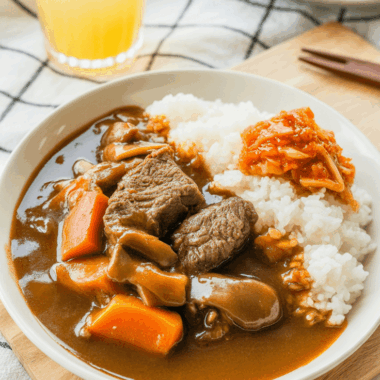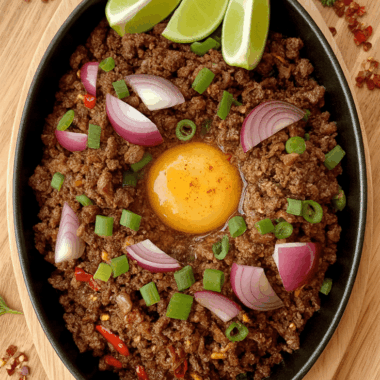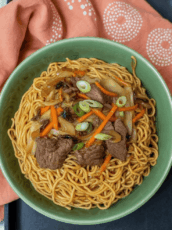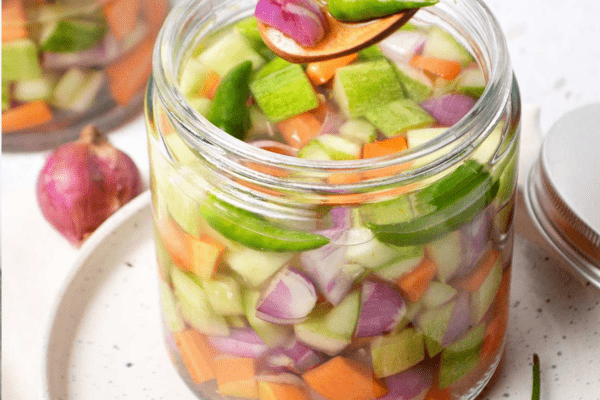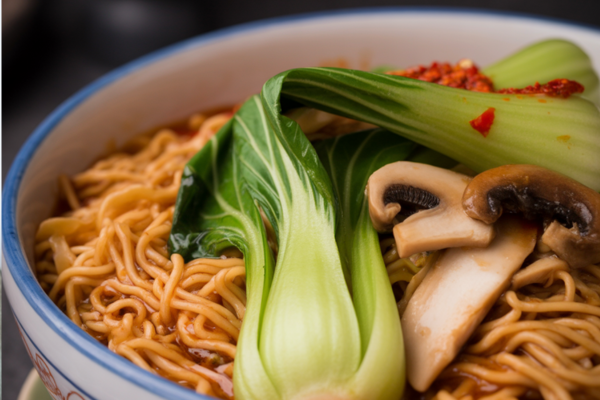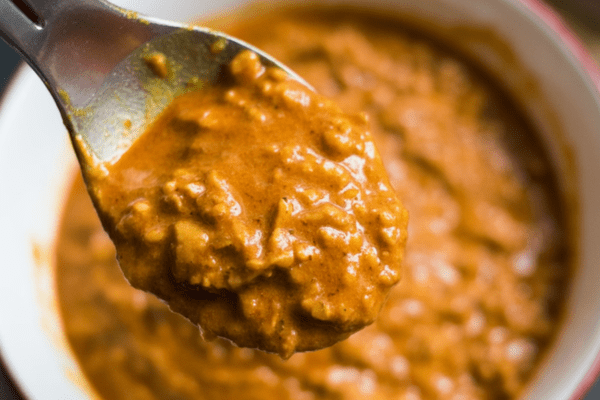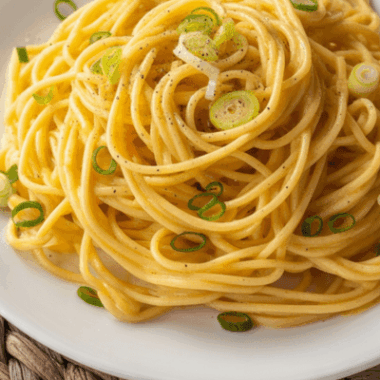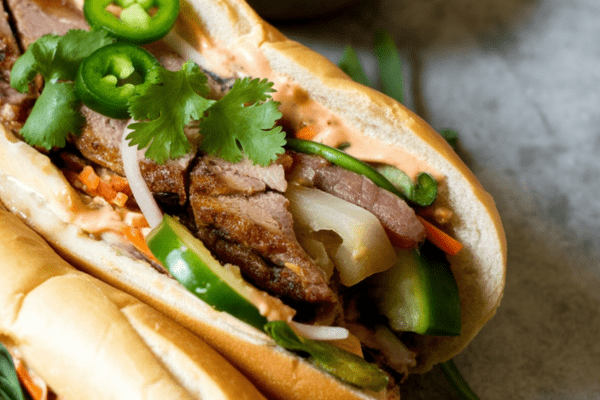I’ve yet to meet a plate of Pancit Canton I didn’t like. This hearty, comforting noodle stir-fry is a regular on my table—whether I’m fixing a quick lunch, feeding a crowd, or craving something savory that hits all the right notes. Think tender egg noodles tossed with pork, crisp veggies, and a savory-sweet soy-based sauce—simple ingredients, big flavor, no fuss.

Why Pancit Canton Always Hits the Spot
In the Philippines, pancit isn’t just food—it’s tradition, comfort, and celebration all rolled into one. I remember watching my neighbor in Manila whip up her signature pancit at the crack of dawn before a family gathering. No matter what the occasion—birthdays, holidays, even random Sunday brunches—there was always a big wok of pancit on the table.
What I love most about Pancit Canton is how easy it is to customize. Pork belly? Perfect. Chicken? Go for it. Shrimp? Toss it in. Even just veggies work beautifully. It’s one of those recipes where once you’ve made it a few times, you start tweaking it to your liking—and that’s when it becomes your own.
Pancit Varieties I’ve Tried (and Loved)
There’s a whole world of pancit out there, and every region—and every family—has its own spin. Here are a few types I’ve cooked over the years:
- Pancit Canton – The star of this recipe. Egg noodles stir-fried with pork, cabbage, carrots, green beans, and mushrooms in a soy-oyster sauce base. It’s the classic for a reason.
- Pancit Bihon Guisado – Same stir-fry concept, but uses thin rice noodles. I make this when I want something a little lighter or need a gluten-free option. Chicken works great here.
- Pancit Palabok – This one’s a weekend project. Rice noodles topped with a savory shrimp sauce, crushed chicharrón, boiled eggs, and smoked fish flakes. It’s rich, bright orange from annatto, and absolutely worth the effort.
- Pancit Lomi – Thick, chewy noodles in a soupy, starchy broth with veggies, pork, and shrimp. I love making this on rainy days—it’s like a big warm hug in a bowl.
One of these days, I might just do a pancit series. There’s that much to love and explore.
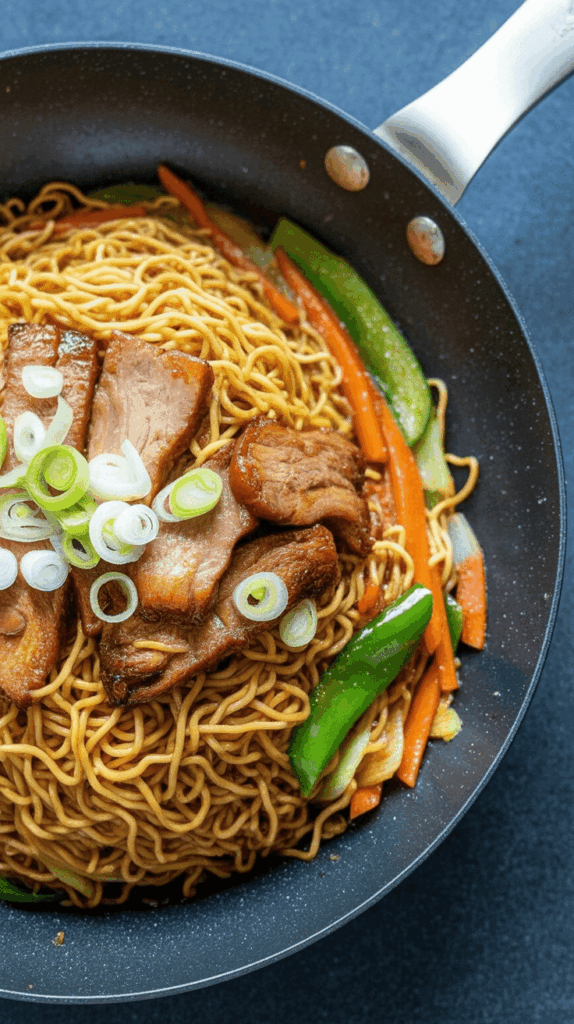
What You’ll Need for This Pancit Canton
Here’s what I usually grab from the pantry and fridge. Feel free to swap or add based on what you’ve got.
- Egg noodles – Look for dried “Pancit Canton” noodles at Asian markets. They cook quickly and soak up sauce like a sponge.
- Pork belly or tenderloin – I prefer pork belly for that rich flavor and crisp edges, but leaner cuts or even chicken work too.
- Soy sauce + oyster sauce – The base of the sauce. I add just a pinch of brown sugar to balance it out.
- Brown sugar – Just a touch gives the sauce a rounder, deeper flavor. You won’t really taste the sweetness—it just brings everything together.
- Garlic and shallots – Shallots give a milder, slightly sweet base. If you only have onions, that’s fine too.
- Chicken broth – Adds depth to the sauce. I’ve made this with plain water in a pinch, and it still comes out great.
- Vegetables – Carrots, green beans, cabbage are my go-tos. You can also throw in bell peppers, snow peas, or mushrooms if you’ve got them.
- Salt and pepper – Season to taste once everything comes together.
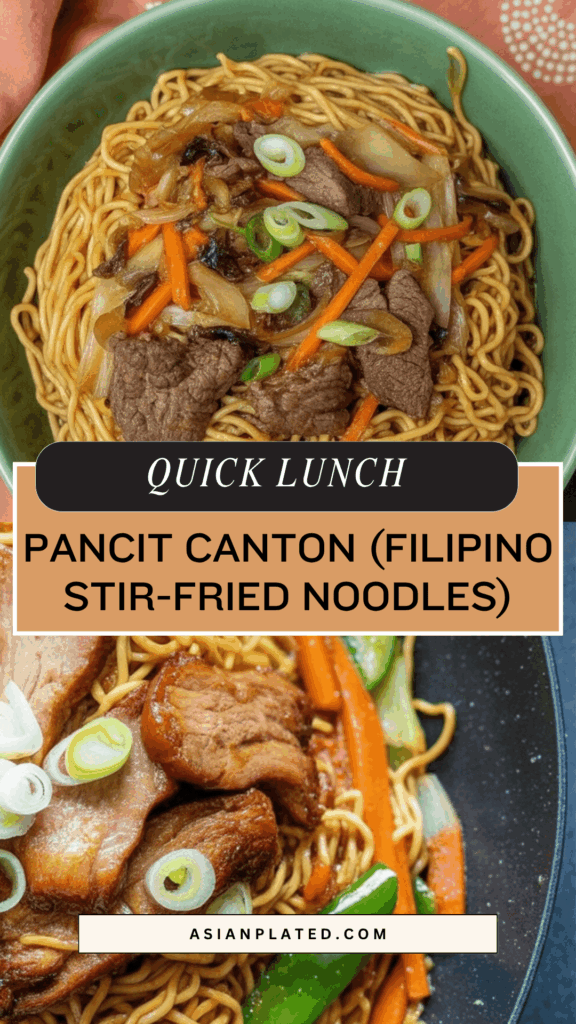
Step-by-Step: How I Make Pancit Canton at Home
1. Make the sauce first.
In a small bowl, mix chicken broth, soy sauce, oyster sauce, and a pinch of sugar. Set it aside—you’ll need this in a few minutes.
2. Brown the meat.
Heat a bit of oil in a large wok or skillet. If I’m using pork belly, I skip the oil because it renders enough fat on its own. Cook until the pork is browned and slightly crispy around the edges—this is where a lot of the flavor comes from.
3. Sauté the aromatics.
Add the garlic and shallots, and stir them around until they’re soft and fragrant. I usually let the shallots brown a little before adding the veggies.
4. Toss in the veggies.
Carrots and green beans go in first since they take longer to soften. Cabbage last—it wilts fast. Stir-fry everything for a few minutes until they’re just crisp-tender. You want some bite, not mush.
5. Add the sauce and noodles.
Pour in the sauce and bring it to a simmer. Then toss in the noodles. Use your tongs or a spatula to press them gently into the liquid. They’ll start softening and loosening up. Keep folding and turning until the noodles are fully cooked and most of the liquid is gone.
6. Final taste check.
Take a bite. Need more soy sauce? A pinch of salt? Adjust as needed, and that’s it—your pancit is ready to serve.
Handy Tips for Cooking Pancit Like a Pro
- Soak your noodles beforehand if the package instructions recommend it. Some dried versions cook better that way.
- Don’t overcook the veggies. Keep them just tender for better texture.
- Let the pork brown well. Don’t rush it—that crispy edge adds a ton of depth.
- Use a big enough pan. Stir-fried noodles need space to move. A crowded pan = soggy noodles.
Can I Prep This in Advance?
Absolutely. I’ve made this a few hours before a party and just kept it covered on the stove. You can also cook the components ahead—meat and veggies in one container, noodles in another, sauce in a jar—and toss everything together when you’re ready to heat and serve.
What to Serve with Pancit Canton
While pancit is often a meal in itself, I love pairing it with:
- Lumpia (Filipino spring rolls) – crunchy, savory, and always a crowd favorite.
- Fried eggs – sounds simple, but a sunny side egg on top of pancit? Magic.
- Grilled or fried bangus (milkfish) – a classic Filipino combo.
- Banana ketchup or calamansi on the side for an extra flavor kick.
Leftovers and Storage
Leftover pancit keeps well in the fridge for 2–3 days. Just store it in an airtight container. I reheat it in a skillet with a splash of water or broth to loosen it up.
You can microwave it too, but I prefer the pan—it brings back that just-cooked texture.
Frequently Asked Questions
Can I make this meat-free?
Yes! Swap the pork for tofu or mushrooms. Use mushroom oyster sauce for extra umami.
What noodles can I substitute?
If you can’t find pancit canton noodles, try dried ramen (without the seasoning packet) or even lo mein noodles.
Can I freeze it?
Technically yes, but the noodles can get mushy after thawing. It’s best enjoyed fresh or refrigerated for short-term storage.
Is it okay to use just soy sauce?
You can, but oyster sauce adds a richer, slightly sweet depth. Even a tablespoon makes a difference
Final Thoughts
Pancit Canton is the kind of dish that always feels like home. It’s flexible, filling, and just plain delicious. Whether you’re making it for a weekday dinner or a weekend potluck, it never fails to get polished off fast.
Give it a go, and don’t stress about getting it perfect. Each time you cook it, it gets better—until it becomes your pancit.
Pancit Canton (Filipino Stir-Fried Noodles)
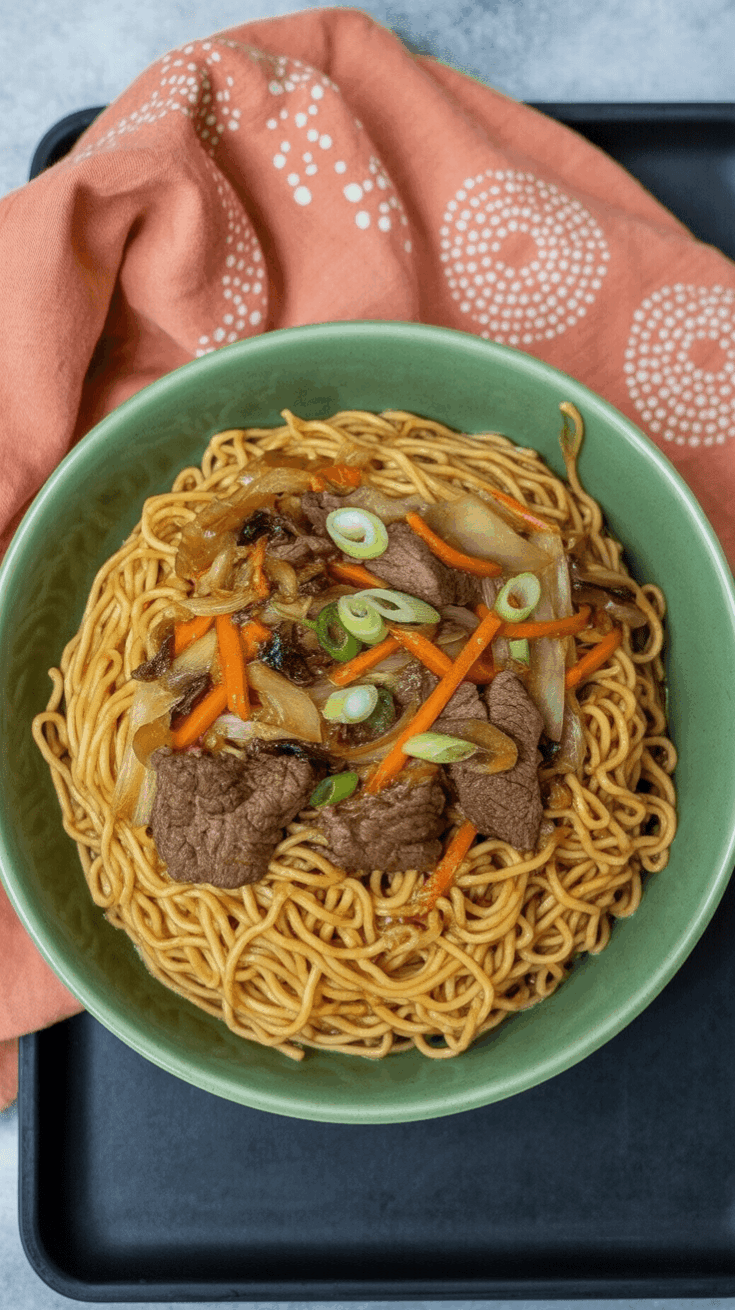
Nothing brings back warm memories of family gatherings like a big, colorful plate of Pancit Canton. This comforting Filipino noodle dish is packed with vibrant veggies, tender pork, and slurp-worthy savory noodles.
Ingredients
- 1 tablespoon brown sugar
- 2 tablespoons soy sauce
- 1 tablespoon oyster sauce
- 2 cups chicken stock or broth
- 1 tablespoon cooking oil
- 1 lb pork belly or tenderloin, cut into thin strips
- Salt and pepper, to taste
- 4 garlic cloves, crushed
- 1 shallot or small onion, chopped
- 1 cup cabbage, roughly chopped
- 1 cup green beans, sliced on the bias
- 1 cup carrots, julienned
- 8 oz dried Pancit Canton (Filipino-style egg noodles)
Instructions
- Prepare the Sauce: In a bowl, combine chicken broth, soy sauce, oyster sauce, and brown sugar. Stir until the sugar dissolves. Set aside—this will infuse your noodles with incredible flavor later.
- Cook the Pork: Heat oil in a large skillet or wok over medium-high heat. If using pork belly, you can skip the oil—just let the fat render as it cooks. Season the meat lightly with salt and pepper, and sauté until browned and slightly crisp at the edges. This step gives your dish that signature depth of flavor.
- Sauté Aromatics: Add garlic and shallots to the pan. Stir until fragrant and the shallots start to caramelize.
- Toss in the Veggies: Mix in carrots, green beans, and cabbage. Stir-fry for about 2–3 minutes until the vegetables are just tender but still vibrant and crisp.
- Add the Sauce & Noodles: Pour the prepared sauce into the pan and bring it to a gentle boil. Once bubbling, add the dry noodles straight in. Gently press and fold the noodles into the broth. Keep stirring and folding to help the noodles absorb all that delicious sauce. Cook until the noodles are soft and the liquid is mostly gone.
- Final Touches: Give it a taste and adjust seasoning if needed. Serve hot and garnish with fresh calamansi or lemon wedges, if desired.
Notes
- Veggie Variety: Feel free to mix things up with snap peas, mushrooms, or baby corn—just stick to 2–3 types to keep it balanced.
- Best Noodles to Use: Look for Filipino-labeled Pancit Canton noodles at your local Asian market for that authentic taste and texture.
- Meat Options: You can swap out pork for chicken or shrimp, depending on what you have on hand.
Nutrition Information:
Yield: 8 Serving Size: 1Amount Per Serving: Calories: 311Total Fat: 19gSaturated Fat: 6gTrans Fat: 0gUnsaturated Fat: 12gCholesterol: 62mgSodium: 574mgCarbohydrates: 13gFiber: 2gSugar: 6gProtein: 21g
Asianplated.com, occasionally offers nutritional information for recipes contained on this site. This information is provided as a courtesy and is an estimate only. This information comes from online calculators. Although allchickenrecipes.com attempts to provide accurate nutritional information, these figures are only estimates.
Try other Filipino recipes:

